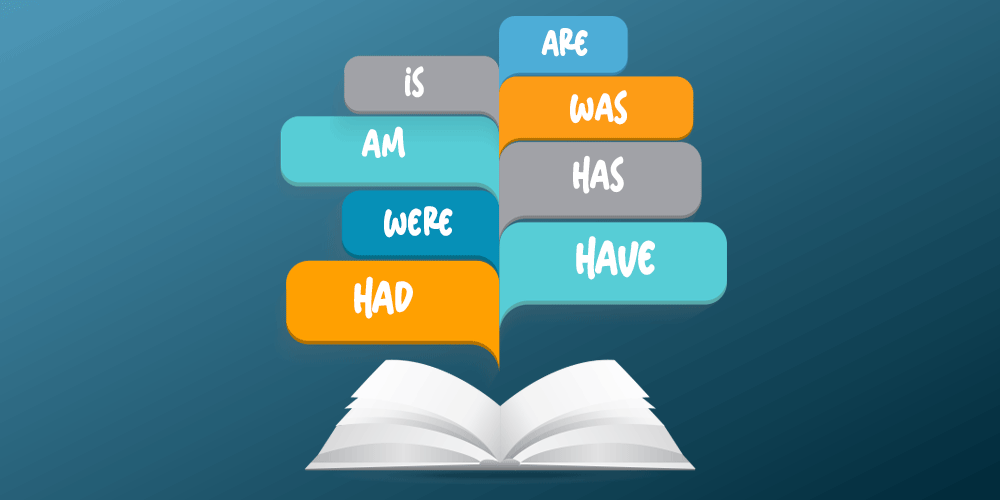Confused about Where To Use “Is / Are / Am / Was / Were” And “Has / Have / Had”? We Are Here To Help!
- admin
- 2022-12-15
- 3 min read

The past tense in English is a common complaint from my students. The past tense is formed by simply adding the suffix “-ed” to the end of a verb. Simple!
Then, though, many have to spoil it by regularizing (or so it seems) half of all English verbs. They no longer have the ‘-ed’ ending. They might result in anything (eating, sleeping, or purchasing)! Even in the past tense, it might still take the same form (divide, cut, bet, or let)! Why, oh why, must English grammar be so perplexing!
The importance of grammar in English Language cannot be overstated. It is the foundation upon which any language is built, and it helps to ensure that we can effectively communicate with one another.
A variety of languages have been blended to create English. Old French and Latin have a significant influence on English. It primarily originates from the Angles, Saxons, and Jutes. These populations arrived in Britain more than a thousand years ago, long before the country was known as “Britain” or even “England.”
Some grammatical conventions come from a single language, while others come from other sources. The guidelines were never wholly standardized for whatever reason. This is also the reason why spellings in English are so tricky. It was never entirely standardized, either.
Is It Not Possible To Learn English Without Studying Grammar Rules?
Contents
So, both yes and no.
Grammar rules are not taught to native English speakers until they enter school. But a child’s learning is different from an adult’s. Grammar is a tool that can assist anyone in speaking more correctly and avoiding any errors in written English. Even though it is not recommended to “learn English by mastering grammar rules.”
People should avoid depending on Grammarly to correct things; instead, they should incorporate at least some grammar practice into their study schedule. The pointers in this post are excellent illustrations of quick, actionable grammar lessons that can help anyone.
Modal Verbs: When And How To Use Them
Almost everyone has a different verb form, and you have a unique technique for forming negative and interrogative phrases. Let’s take a moment to study the verb quickly.
There are a total of eight distinct “personalities” for To be. One will need to use one or the other based on where the verb is in the phrase, which one is referring to, or when the action occurs:
Be – The verb’s infinitive form is “to be.” When discussing the verb generally (as in “the verb to be is highly essential”) and with specific compound tenses, one uses it.
Am/Is/Are – These are the three present tense forms of to be, as seen in the following section. So, I am the first person singular, he, she, or the third person singular, and we are the first person plural, you are the second and third person unique, and are the third person plural (they are).
Was/Were – These two verb tenses are employed to express the past tense: was and were. Was it used for first and third-person singular pronouns (I, he, she, and it), whereas were is used for first-person plural pronouns (we were), second-person singular and plural pronouns (you were), and third-person plural pronouns (they were)?
Being — The present tense of the verb to be is “to be.” You’ll mostly encounter it in phrases with a subject like “Being a polyglot is a tremendous asset” and in continuous tenses like “I am being,” “she was being,” etc.
Been – This verb’s past tense is “been.” Again, the perfect tenses are utilized.
At this time, do not worry too much about all these verb tenses. Each of them will be fully explained in the following sections, as when and how to utilize them.
Humans employ distinct English tenses for various purposes. But some of them are used more frequently than others.
The auxiliary verb in the present perfect is always has (for I, you, we, or they) or has (for he, she, it).
Always use the auxiliary verb had when writing in the past perfect.
Conclusion
Grammar’s use of tenses is crucial. Since the idea of tenses is dependent on time, people use them to talk about time-related events. Specific verb tenses indicate the multiple timelines when the event took place. Past, present, and future tenses are among them. However, humans all run into trouble using had, had, and has.
21K School
Read our latest education blogs here. We are pioneers in proffering personalised, affordable and high-quality lessons using an advanced learning platform.


Join Asia’s Leading Online School and Unlock
endless opportunities
Join Asia’s
Leading Online School
and Unlock endless opportunities

 Thailand
Thailand




